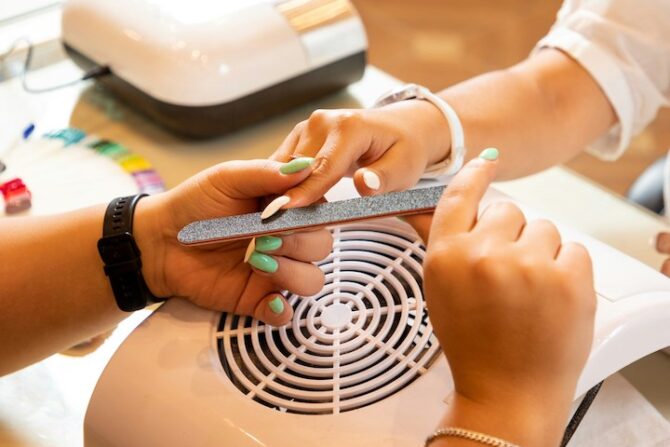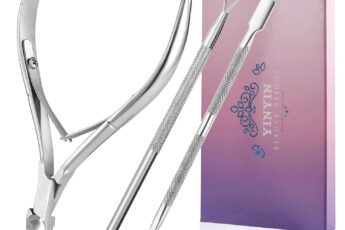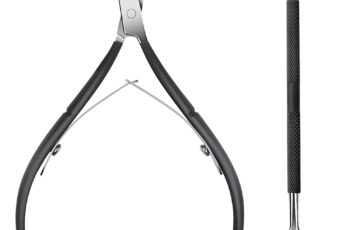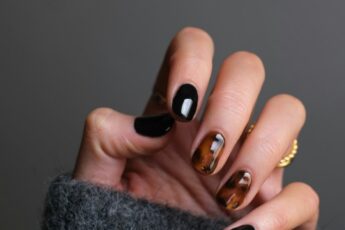Cuticle care is a very important aspect of having healthy nails and hands, but it does seem to be the one step that gets skipped whenever people go through their daily nail routines. People trim, polish, and shape their nails without actually taking much time to look at or take care of their cuticles. Others might even cut them inappropriately, opening up the skin to possible damage and infection. Improper trimming of cuticles may seem to be such an innocent action; however, done improperly, this can lead to redness, pain, and at least some infections that affect the health of your nails. This is why we are going into how to trim cuticles without damaging skin.
So, why is cuticle care so important? The cuticle is basically a sealant, closing off the space between nail and skin to bacteria and infections. Trimming them too short, or using the wrong tools, breaks this barrier and opens up your nails to unwanted problems. And while you might want perfectly neat cuticles, trimming them without the proper steps taken can cause irritation or even long-lasting damage. But do not worry – you will learn how to trim them safely with some basic techniques and proper tools.
In this post, we are going to take you through all that you should know so as to cut your cuticles without harming your skin. What do cuticles do, to choosing the correct tool – we cover it all in this article. We further review two popular cuticle clippers named YinYin and Ejiubas, which are effective yet very easy to work with. Let’s dive into the details to find out how to take care of your cuticles safely.
Table of Contents
Understanding Cuticles and Their Importance
Before actually detailing the steps in trimming cuticles, let’s understand what cuticles are and why they are so important. Cuticles basically refer to that thin layer of skin across the lower edge of your nail that shields the space between skin and nail. In essence, they provide a natural barrier against bacteria, germs, and dirt trying to get into your body through the nails.
Healthy cuticles mean healthy nails and keep your nails looking clean and polished. Neglect them, or cut them the wrong way, and they might dry out, crack, or otherwise become irritated. Much worse, not taking proper care of your cuticles can leave your nails open to infections, which might impede growth and create lasting problems. So, though it may just seem like another step in your nail care routine, proper cuticle care is fundamental for healthy hands and nails.
Preparing Your Hands for Safe Cuticle Trimming
One of the most important steps in trimming cuticles safely is preparing your hands and nails. This helps soften the cuticles, making them easier to trim without cutting into live skin.
Step 1: Soak Your Hands
Soaking your hands in warm water for about 5 to 10 minutes will gently soften the cuticles. You can add a few drops of moisturizing oil or mild hand soap into this soak for better effectiveness. This softening makes it easier to push back and trim the cuticles without pulling or tearing.
Step 2: Use a Cuticle Softener (Optional)
After soaking, you can apply a cuticle softener if you wish. Cuticle softeners are variously designed formulas that help in the breakdown of dead skin around the cuticles, thereby making the process of trimming even easier. Apply a little to the cuticles and leave it on for a few minutes. Remember to always clean it off thoroughly before starting the process of trimming.
Step-by-Step Guide to Proper Trimming of Cuticles
With your hands and cuticles prepared, the actual trimming would be in order. The right implements should be used in the right methods to avoid injuring any skin.
Step 1: Gently Push Back the Cuticles
Before any actual cutting, push the cuticles back with the cuticle pusher. This allows you to see better which needs to be cut and which doesn’t, so it will stop you from cutting too close to the skin. Be extra-gentle to avoid harming the nail bed or causing discomfort in any way.
Step 2: Trim Only the Excess Cuticle
Using a quality cuticle trimmer, only trim the excess skin that you have pushed back. Be sure not to cut the whole cuticle or too close to the skin, because this can be very damaging to the protective barrier. You can then trim your cuticles section by section, making sure to not rush through it.
Step 3: Work Slowly and Carefully
Working slowly and being mindful of each snip can help you avoid accidentally cutting too deep. This is where your patience plays an important role, as quick cuts can invite nicks and tears, which may take some time to heal and perhaps invite infection.
Essential Tips to Avoid Skin Damage While Trimming Cuticles
Even with the best of tools in the best of preparations, there are a few important tips to know that will help you avoid skin damage while trimming cuticles.
Never Cut Dry Cuticles: Make sure your cuticles are soft before you begin the treatment of trimming. Trimming of dry or thick cuticles may result in rough edges and a higher risk of cuts.
Don’t Cut Too Close to the Skin: Leaving a little margin between your cut and live skin is important to protect the nail bed. Cutting too close may tear the skin or even cause damage to the nail bed.
Monitor Your Trimming Frequency: Cuticles don’t need frequent cuts. Once every few weeks is usually enough to take into consideration for your nail growth. Over-trimming will lead to irritation or infection.
Product Reviews – Top Cuticle Trimmers for Safe Trimming
Safe cuticle trimming begins with the right tools. In that light, let’s take a look at two very popular options: YinYin Cuticle Trimmer and Ejiubas Cuticle Trimmer.
YinYin Cuticle Trimmer

The Yinyin Cuticle Trimmer is a high-quality instrument manufactured with 100% polished stainless steel, which enables the cutting head to stay sharp for a long time and be durable. It contains a pusher and cutter in one piece, complete for cuticle management.
Its jaw allows it to trim precisely, even in little or tight areas around the nails. The adjustable spring adds comfort and flexibility when using this tool. And it comes in a cute, compact storage box that will fit perfectly into your kit bag for easy carriage.
Pros
- It stays sharp for long, maintaining a perfect performance.
- The ergonomic handle and cuticle pusher make it comfortable for both trimming and pushing.
Cons
- The adjustable spring may need tightening from time to time.
- It’s a bit heavier compared to some trimmers out there, which might be a problem in terms of ease of control.
Ejiubas Cuticle Trimmer
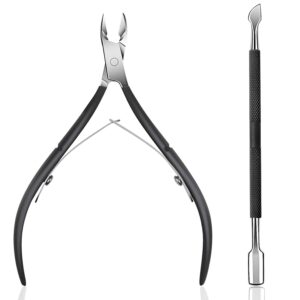
Only in the Ejiubas Cuticle Trimmer will you find the material used in its polished stainless steel, guaranteeing a sharp and efficient cut every time. This trimmer features nonslip rubber grips for secure handling and a protective plastic tip for guard against accidental pokes.
It comes with a dual-end nail pusher, ideal for scraping and pushing back cuticles. This product is intended for use both at home and in professional salons; it has a sharp jaw head that isolates problem areas to be trimmed precisely.
Pros
- Comfortable to hold and maneuver due to its ergonomic rubber grip.
- Dual-ended tools for both pushing and trimming increase functionality.
Cons
- The edges are extremely sharp, so it may not be ideal for beginners.
After-Care for Cuticles After Trimming
The after-care of your cuticles after a trim is a very important act that would prevent drying and hence keep health at the nail area.
Moisturize Often
Application of cuticle cream or oil after a cuticle trim would soothe skin and be capable of preventing dryness. Hydrating is one sure way of ensuring soft healthy cuticles, to also help prevent hangnails.
Go Gentle on Products
Freshly trimmed cuticles may burn from harsh soaps or sanitizers. Go easy on them by washing your hands with mild hand washes or using moisturizing hand sanitizers that keep your hands free of germs yet moisturized.
How Often Should You Trim Your Cuticles?
This depends on your nail growth and, of course, personal care. Generally speaking, every few weeks is enough for cuticles to stay manageable without the risk of over trimming. If you are not sure, observe your cuticles – if they begin to look thick or ragged, it may be time to snip away.
Also Read: How To Make Homemade Nail Detox Soaks
To prevent this, it is better to be more conservative and not cut them often. If in doubt, always consult with an expert nail technician who would advise on the best based on your nails.
Conclusion
Though cuticle trimming seems like an insignificantly small task, if well performed, it really creates so much in terms of the health and good look of your nails. Using an appropriate technique with appropriate tools, like the YinYin and Ejiubas cuticle trimmers, you will manage to keep your cuticles neat and nice without causing any damage to the skin.
Frequently Asked Questions
Why should I avoid cutting too close to the skin when trimming cuticles?
You can cut too close and ruin the protective coating on your nails, making them susceptible to bacteria and infections.
How often is it safe to trim cuticles?
Generally, cutting your cuticles once every few weeks is safe.
Are all cuticle trimmers safe to use on sensitive skin?
While most trimmers are fairly safe, those that have sharp edges may not be good for sensitive skin. Look for ergonomic and easy-to-operate options.
How can I best maintain soft cuticles between trims?
You can do this through regular moisturizing with cuticle oil or cream to keep cuticles soft, which also prevents them from cracking.

